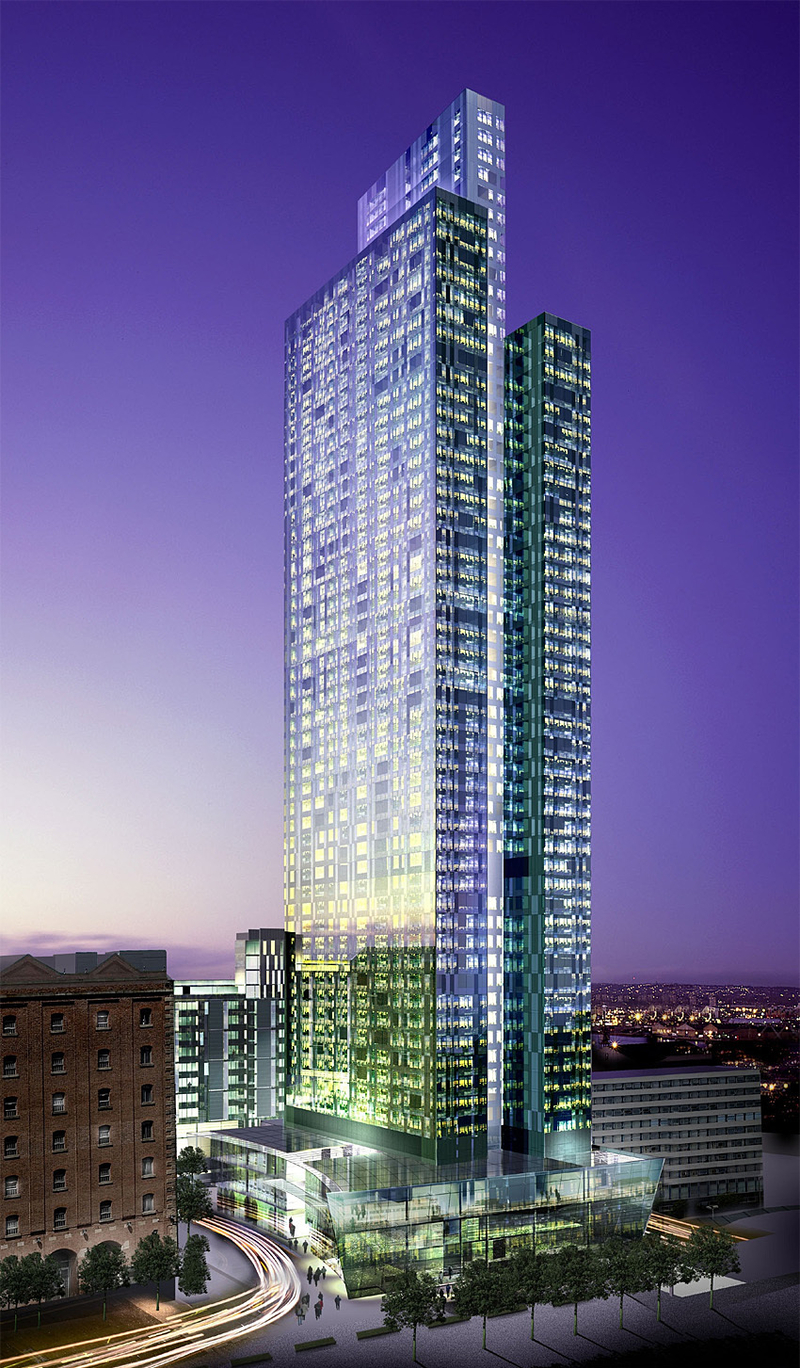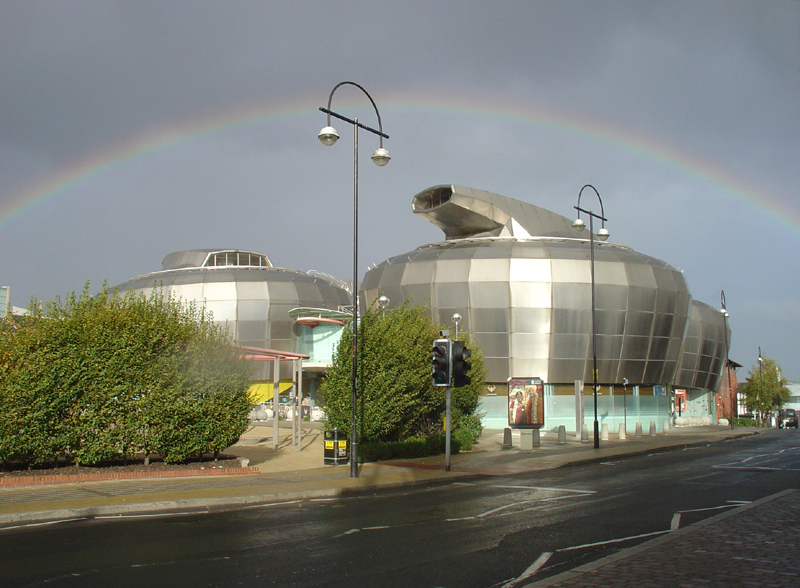Jonathan Schofield on curiosities that never happened in Manchester
Cities are about change. It's inevitable. But they are also about dreams. Cities are a canvas to paint upon for architects, developers, indeed anybody who wants, not just the professionals.
A fun and lively view of the city centre, deliberately off kilter, zany, a cartoon.
Here we start an occasional series looking at ideas that were dreamed up that never became reality. It's fascinating to wonder what might have been, to look at those 'sliding doors' moments of Manchester's built environment, just as it is with our own lives.
We start with what would have been easily Manchester's tallest structure if it had been built and when it wasn't, was superceded by another super tall structure that never happened either. There's a very entertaining cartoon imagining of the city centre too.
Blueprint Magazine got excited in the 1990s about the changes which might arrive should Manchester win the right to hold the 2000 Olympic Games. So they commissioned international designers to come up with some ideas.
Czech-designer Eva Jiricna came up with a glorious 300m (almost 1,000ft) high radio mast located behind Piccadilly Station. This would have been double the height of South Tower, Deansgate Square, 201m (659), currently the city’s high-flyer.
The inspiration for the structure is fairly obvious. Barcelona’s Torre de Collserola had been erected to the designs of Mancunian born Norman Foster for the 1992 Olympic Games. Ambitious cities of the time had tick boxes of assets they needed to acquire. Along with concert halls and indoor arenas were Communications Towers.

The simplicity of Jiricna’s design has much to commend it and would certainly have kick-started the redevelopment of a part of Manchester’s city centre which is only just now having the big ideas arrive.
Blueprint Magazine slapping themselves on the back for their choice of designer wrote, ‘The tower would be the tallest structure in the city, but its light and slender form would enhance rather than dominate the skyline.’ Looking again at the picture on this page it’s hard to disagree with that sentence. This was one idea we let slip.
More than a decade later in 2005 the site that might have held the Communications Tower was in the news again. This time it was to host Eastgate Tower which at 188m (620ft) would have been top dog until the aforementioned South Tower, Deansgate Square.
Designed by Australian architects, Woods Bagot, it's an elegant tower with a crafty podium that didn't stand a chance once the late noughties recession hit.
Eastgate had an afterlife though. Before a spade touched a sod, the city's visitor and tourism agency, Marketing Manchester, jumped the gun with their 'Manchester Bag'. This was a cute small sack with wooden cut-outs of key city buildings. The ghost of Eastgate Tower was included.

Back to Blueprint Magazine. In 1992 it had shown it's more playful side with the whole cover of the magazine devoted to a hypothetical Manchester dreamt up by Nigel Coates.
Blueprint described the cover this way: ‘Nigel Coates’ plan for millennial Manchester makes the Olympics a catalyst for a vivid reassembly of the fractured city centre.
'At its heart, Coates cuts out a new public forum near the Arndale Centre. To the south are Olympic pools, the Space City and ‘virtual encounter bars’; to the west, an ‘organic’ cultural centre’; to the north the Shudehill Olympia, an ‘acropolis’ complete with Olympian colossus, theatres and archery centre. Two ramps to the east connect the centre to Ashton Gardens, the link to the main stadium site a mile away.’
This is a fun and lively view of the city centre, deliberately off kilter, zany, a cartoon. The idea of an Olympian colossus is intriguing, the ‘Sex Olympia’ where the present First Street development sits sounds risqué. Cities, after all, are supposed to cater for all tastes. Otherwise we might as well go and live in the country.

As for Coates he would go on to help design the National Centre for Popular Music (NCPM) in Sheffield. This was one of those grand UK projects for the millennium largely funded by the National Lottery. Designed to look like three drums it was filled with abstract exhibitions when all people really wanted to see was Hendrix's guitar, Ringo's drumkit and so on, real memorabilia.
NCPM was perhaps the biggest failure of many millennium 'grands projets'. It opened on 1 March 1999 and cost £15m. It closed in June 2000 after being shunned by visitors who thought the ticket prices too high and the content meagre. It is presently a students’ union, a very expensively designed students’ union, with in November 2020, the Covid-19 year, no students in it at all.
NCPM closed while Manchester never got its Sex Olympia. We did get HOME arts centre on the same site, which is less racy but does a fine job. And close to HOME and the notional location of the Sex Olympia Manchester got Wood. The restaurant that is.

The buildings in this article are featured in Jonathan Schofield's lavishly illustrated books, Lost & Imagined Manchester and Illusion & Change Manchester (£16.99) - they can be bought here. During lockdown he is running special Zoom tours. You can follow @JonathSchofield on Twitter and Instagram















